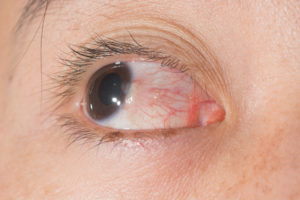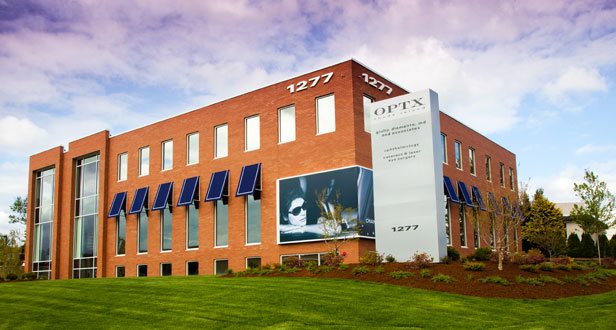
There are many conditions that can affect your eyes, some more dangerous than others, but none of them manifest themselves in a more interesting way than a pterygium. A pterygium appears as a growth on the sclera, which is more commonly referred to as the “white of the eye”. Eventually, it grows into a more wedge-shaped, fleshy tissue that grows onto the cornea towards the center of the eye. Typically, it grows from whichever side is closest to the nose and grows outward toward the pupil. It can, however, grow from the opposite side. Left untreated, a pterygium can lead to irritation and some vision loss, however treatment is not always necessary.
How Do Pterygia Develop?
The primary cause of pterygia is prolonged UV ray exposure. Wind and the prevalence of airborne particles can factor in as well, and dry eye disease is also believed to play a role. This condition is rarely seen in children, though it is considered relatively common in older adults.
The reason a pterygium is also called “surfer’s eye” is because surfers often get them as a result of being outside a lot (i.e. prolonged sun exposure). It is somewhat of a misnomer, as anyone can get them, your chances are just significantly increased the more time you spend outdoors in constant contact with the UV rays.
Prevention and Treatment
The number one way to maintain health is through prevention and early detection. It is extremely important for a multitude of reasons to wear sunglasses with 100% UVA and UVB protection when going outside. Not only will this help to prevent pterygia from forming, but it will reduce your chances of forming cataracts and other vision problems significantly. Wraparound style sunglasses are particularly useful, due to their added protection from dust and wind. Combine these with a brimmed hat for maximum protection!
Early detection is accomplished by simply scheduling regular checkups with your doctor. If you live near Johnston, Rhode Island, we offer a variety of services, including sophisticated pterygium removal surgery.
Pterygium surgery is usually reserved for growths that have begun to block vision, as it is actually non-cancerous. Symptoms can be treated with other methods such as steroid eye drops and special protective contact lenses that cover the pterygium and prevent additional damage from occurring. If you would like to remove the pterygium for cosmetic purposes, that can be done as well.
The actual removal surgery only lasts for 30 minutes, and recovery is very short. You will probably be required to wear an eye patch to reduce the chance of damage to your eye in its fragile state. Pterygia can come back after removal, but your doctor may prescribe you different things to help combat this.
Pterygia can be annoying, but don’t worry. Dr. Diamante and his incredible team of professionals are here to help! Contact our Johnston, RI office to schedule a consultation with Dr. Diamante.


